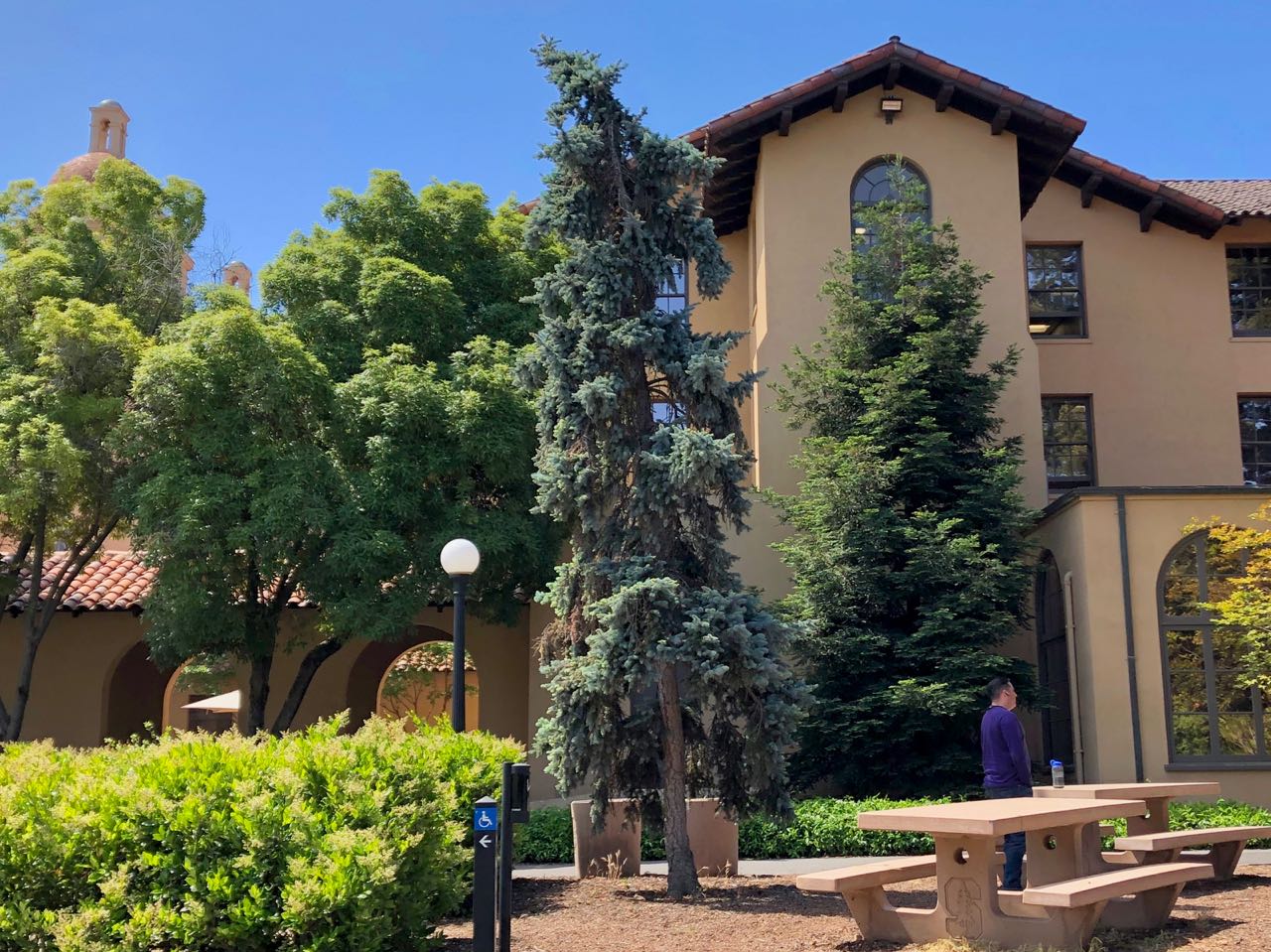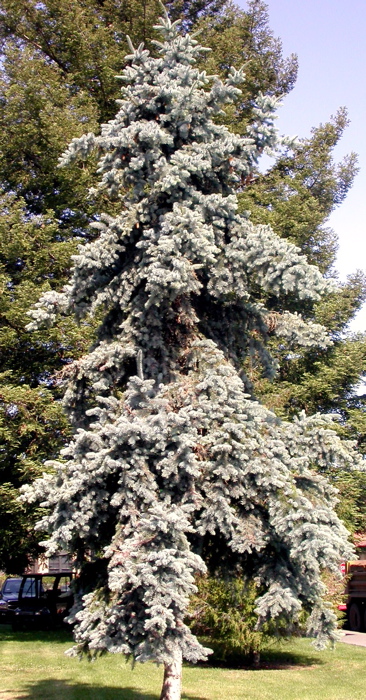Picea pungens
 Colorado spruce
Colorado spruce

More common in cold climates but Colorado spruce can be found in the Bay Area, often installed by transplanted gardeners who grew up with them or those who are setting out live Christmas trees. The short needles of Picea pungens are sharply pointed, ranging in color from green to gray green to blue green; the toothed cones are slightly more than an inch in diameter, cylindrical, around 3 inches long.
Examples are in Serra Grove between Sequoia Hall and Serra Mall, and at 1012 Vernier Place. Most campus specimens appear to be the blue-gray variety P. pungens var. glauca, Colorado blue spruce. See one on the north side of the Old Union. An attractive tree at 828 Lathrop Drive was planted in 1964. One of the two specimens at 225 Santa Teresa Lane is approaching 35 feet in height. A mature specimen is adjacent to the garage at 775 Mirada Avenue; trees also can be seen at 788 Cedro Way and 850 Esplanada Way.
Many other cultivars of this formal tree, which is the most popular spruce, are available, including interesting dwarf and pendulous forms.
Name derivation: Picea – Latin name for pitch-pine, derived from pix (pitch); pungens – sharp pointed (the needles).
About this Entry: The main text of this entry is from the book Trees of Stanford and Environs, by Ronald Bracewell, published 2005.




